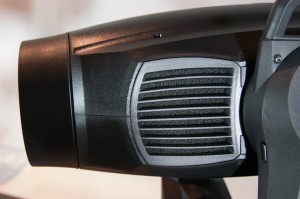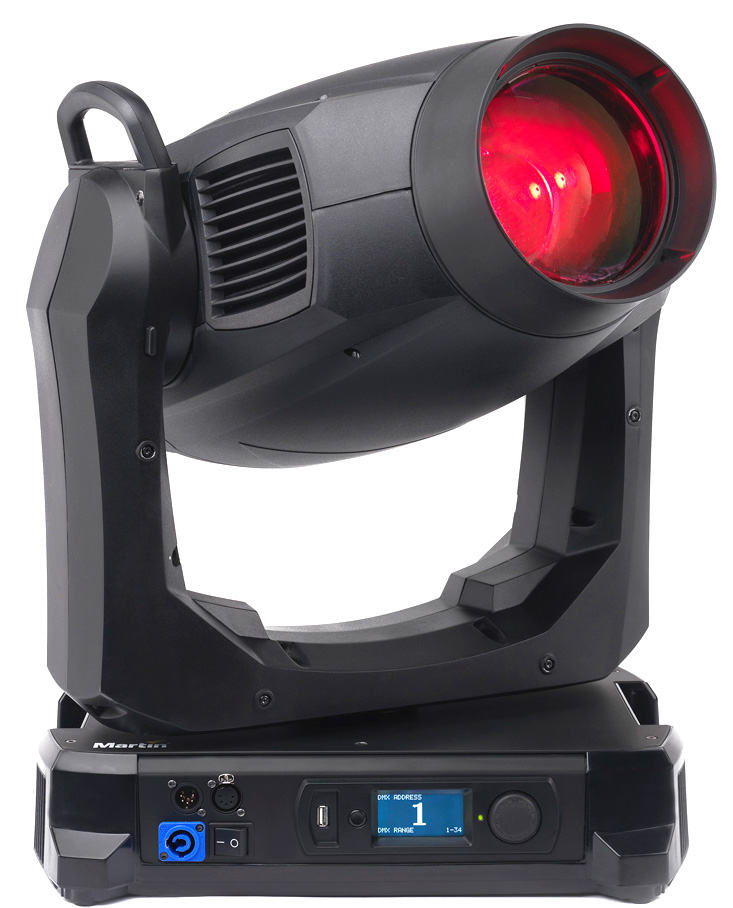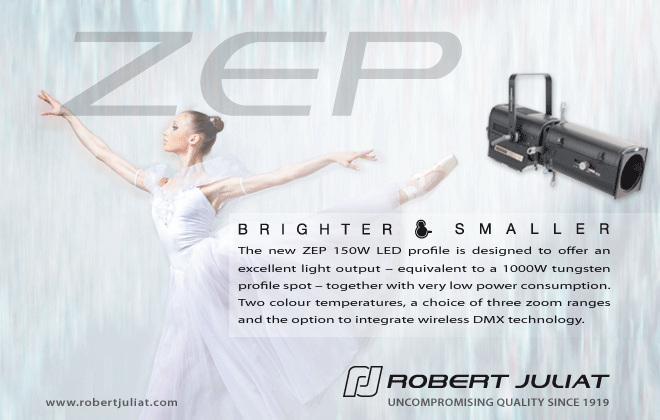This paper is available in
Français too
It is the new revolution of the season, a Martin moving head, a true spot with a blessed 1000 W discharge lamp, gobos, CMY color, zoom and functions like the good old days of this breed of projectors that we believed to be extinct. It has a rock star name and the stature of a workhorse; it is a deadly viper and a legion of 5000 units has already marched out of the factories. It’s all here and, more than anything else, it represents a resurrection.
Mac. Three letters, the symbol of an entertainment industry so young and so rushed that it disowns its products at each evolution. Many of these moving heads have been produced by the Martin company, acclaimed for their products but denigrated over the years by the battering of fierce competition in a marketplace that is ultimately so tiny and so volatile. And yet the MAC600, MAC2000, MACIII, MAC700 and others remain, in their own ways, universal symbols. Symbols of democratization, dreams of accessibility for generations of lighting designers, despite their faults. Technology does not always focus on the purity of a beam, and this is unfortunate. And then, one morning, Martin’s engineers redesigned show lighting, the accuracy needed to illuminate actors, costumes and sets, the delicacy of a beam landing on a dancer, the purity of colors playing with a band, the power of an explosion of light at the grand finale. That’s when the Viper project was born. In spite of its garish name, this spot is probably the best product to come out of Martin to date. And Viper will undoubtedly also become a new symbol, and rightly so.
Handling and ergonomics
It sits proudly on its base, and so do I, as some old pains were awakened on that rainy day by transporting it from the car of Jérôme Garnier, technical director of Martin France (whom, by the way, I wish to thank for his availability). It weighs quite a bit… 37.2 kg precisely. Although this is 15 less than its big brother, the Mac III, from which it inherits certain features. Among these features are the second pair of handgrips, located above the arms of the yoke, that are very useful for moving it. However, the era of big and stocky seems to be coming to an end, as the competition presents machines with equivalent outputs in very small chassis and very light materials. I would not like for Martin to stop using a robust and durable construction, but I would not want to hang this fixture from a truss by myself.
Advertising

So, I take a look at it: a squat base, angular arms and a massive head that is pointed like a missile. The Marketing department gave it the name that could be an action movie title and the designers dressed it up in high-tech armor. Enormous air vents scar its cheeks and the slightly grainy, flat black paint make its skin seem to be granite. This is as impressive as it is disquieting. Like a custom car, it gives the impression of playing one-upmanship.
I look again. The lens of the optical group is remarkable: a large, delicately polished diamond. This can produce a superb output beam.
The construction is solid, the workmanship excellent, the weight a guarantee of quality. The handles, though they are not the most comfortable, allow easy handling in all circumstances, though always with four arms. A single lock on the tilt facilitates servicing and stowing in the flight case.
I finally give up on the pan lock – a useless and irritating device – when the damned latch refuses to budge.
Under the base, eight 1/4-turn, threaded sockets for omega brackets are arranged in a hexagon. Parallel, perpendicular or at 45° to the base, there are plenty of options for the brackets: this is good. An arrow designates the “front” of the fixture, strangely located on the side with the cable connections.You will have to choose between respecting the direction of suspension and discretion of cabling.
Attachment of the safety cable is also carried out from below, in a dedicated recess that is too small: this is not so good. Particularly negative is the fact that the very thin feet will allow the Viper to sink to the floor if you deploy it standing on the ground, forcing you to unhook the safety cable to keep it from wobbling.









